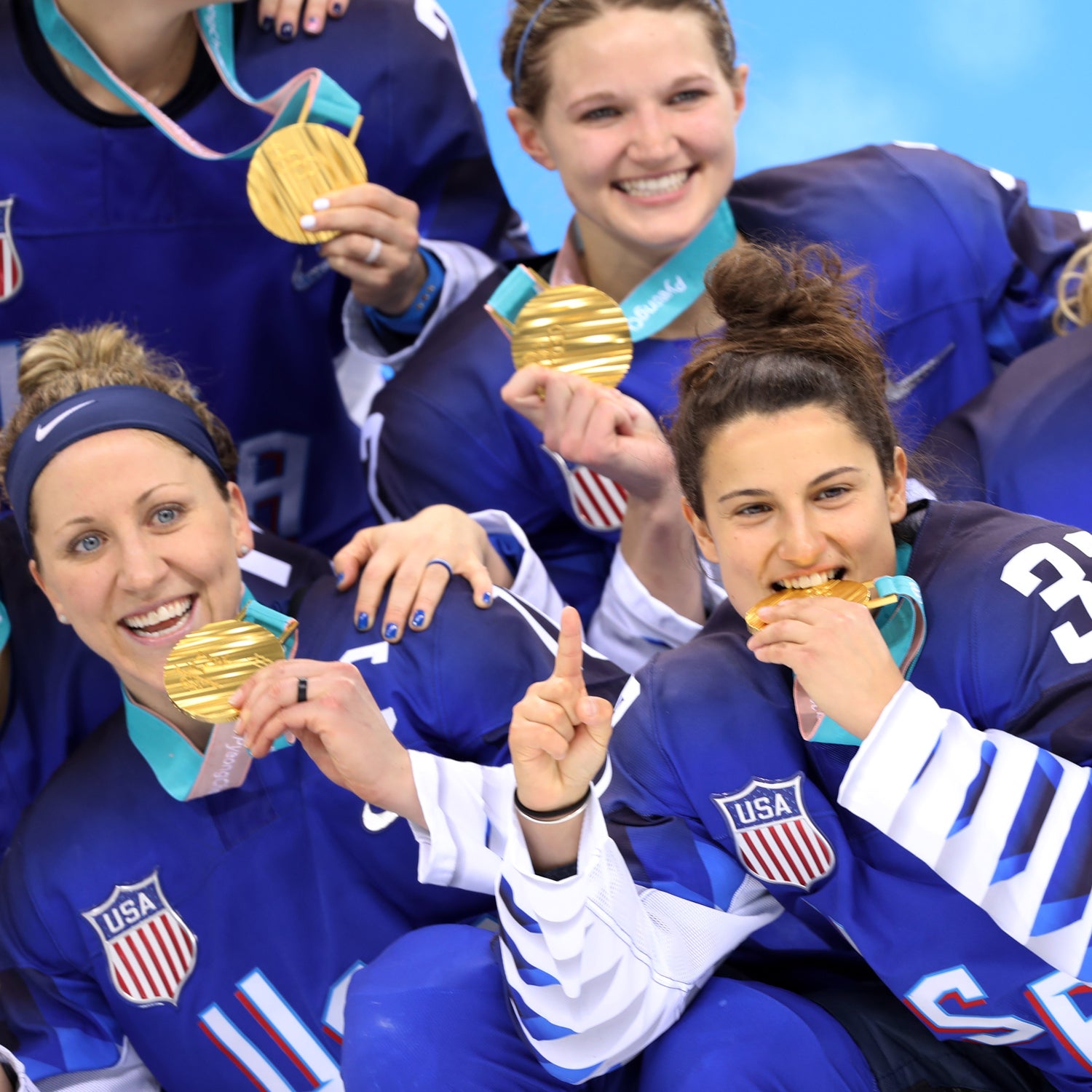Kvetch, kvetch, kvetch.
By week two of the Pyeongchang Winter Games, water-cooler talk around the country went like this: “” And “”
In context, fourth isn’t all that bad of a showing. The United States finished third in Salt Lake with 34 medals, second in Torino with 25, third again in Vancouver with 37, and Sochi saw us in fourth with 28. That last one will probably change as more Russkies (first place!) (no place!). It was also to be expected that with these Winter Games being held in Asia, more Asian countries would medal, adjusting the counts, if not the rankings. At least we’re not in Calgary territory. Back in 1988, we took home just eight medals on what was essentially home turf.
If you’re in the hater camp, there are some things you should know about Olympic sports—especially the ones performed outside—before you spew forth your vitriol.
First, there’s the weather. As Bode Miller repeatedly pointed out during the women’s downhill coverage, conditions change. And when podium positions are decided by a few centimeters of ski after a descent of 2,395 feet—roughly top to bottom at Colorado’s Arapahoe Basin—conditions matter. A puff of upslope air in the chest can bump you from the medal stand. So, too, can snow crystals that morph or melt when the sun peeks out from behind a cloud. Or the loss of full-spectrum light when the sun tucks back in. To paraphrase Bode, the best skier doesn’t always win. To compensate, all-around alpine racers like Mikaela Shiffrin travel to World Cups with 70 pairs of skis. But even a fleet of boards and a seasoned personal technician isn’t a fail-safe approach.
In Torino, U.S. speed specialist Daron Rahlves (12 World Cup victories) was a favorite for a medal after having won three World Cups in the lead-up to the games. “I was in the start gate a minute out,” Rahlves recalls, “and suddenly the ski tech grabbed me by the shoulder and had me step out of my skis and into a new pair. They were changing my skis at the last minute. Bode had gone two spots ahead of me and had a slow run. The techs and coaches assumed they had a ski-prep issue. But they hadn’t seen that Bode had made a mistake at the bottom. It wasn’t the skis. And the replacements were slower. I paid the price with equipment that day.”
That’s also the world Nordic skiers live in all the time. Imagine a NASCAR pit crew prepping a car for a race with the track changing beneath their feet. “Maybe it’s a little telling,” says former U.S. Nordic head coach Peter Vordenberg, “but I’ve never thought of weather and wax and base structures as things that can go wrong. It’s so ingrained that it’s just part of the sport. If you stop to contemplate what can go wrong, it’s a crushing thought. But you don’t look at it like that. You can’t.”
Instead, the goal is preparation and execution. Like a NASA launch, you front-load all the work, and then, whether you’re a ski tech, a coach, or the athlete in the spotlight, you just let your training take over. That approach has worked well for skiers like Vonn and Shiffrin on the World Cup, where they have a combined 25 season titles and counting. But the Olympic Games are anomalies in the careers of winter athletes. For four years at a time, they compete, win, lose, break themselves down, and build themselves back up, largely in obscurity. And then, for two weeks, the world is dropped on them.
Often when we see favored athletes fall short at the Olympics, we’re watching the effects of a maddening onset of nerves. Shiffrin was reportedly throwing up before the slalom. Marcel Hirscher—the other best slalom skier on the planet—skied out of his slalom as well. To Rahlves, Olympic pressure is the single biggest factor in underperformance. Over the course of years, he maintained a steady routine before races, but in Torino, his system was completely derailed by media attention. The athletes love their sports and their country, so they oblige, but it can quickly overwhelm. You might recall Bode Miller skiing around fences to get away from the media back in Torino. He wasn’t being a dick—he was trying to keep his head straight.
For more evidence, witness Vonn in the start of the women’s downhill on Wednesday. I’ve watched her race on television since she was Lindsey Kildow, and she’s always had game-day focus. In Pyeongchang, Vonn was breaking from her routine, throwing her hands in the air, and smiling at the camera. She medaled, but she could have won. She’s still the best downhiller in the world. The following day, Vonn selected a different set of skis and crushed a lot of the same competition in the downhill portion of the women’s combined. “She comes out for the combined and she’s a whole different girl in the start gate,” says Rahlves. “So much more focused. And she laid down an insane run.”
Which opens another can of how-to-medal-at-the-Olympics soup. Vonn and the media had low expectations for the combined—a factor that often leads to big results. Nobody was talking about Red Gerard (snowboard slopestyle) or Ester Ledecka (women’s super-G) from the Czech Republic as gold-medal threats, so they just came out and lit it up.
Sometimes the favorites (see: ) get bucked around by mental ruts. Or, like Shaun White and our seven other gold medalists thus far, they rise to the challenge. Maybe we all could help by paying more attention between Olympics so the athletes feel they’re valued.
Or maybe they need some Zen training from Vordenberg: “[Shortcomings] happen when focus is on an outcome rather than the performance. To win, you must perform, and the performance is where your focus and your effort should be—right in that moment, that flow state. When you are focused on the outcome, your attention is stolen from the moment. You can’t breathe as easily, your muscles are tense, blood isn’t flowing well, you get a little cold…you slow down.”
As for Norway, they just love winter sports more than we do. They deserve to win.


